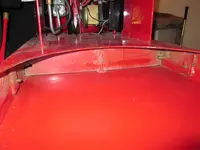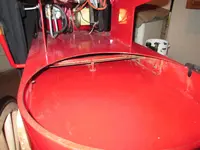samuelstafford
New member
- Dec 14, 2013
- 12
- 0
I am almost at a decision point in buying a roaster and had a question about airflow. The two machines I'm comparing are the San Franciscan SF6 and the Diedrich IR-2.5.
The SF6 appears to have airflow through the drum that is either fully on or fully off.
The IR roaster has airflow in the drum that is either off (it's actually slightly on), 50/50 thru the drum and cooling bin or fully thru the drum.
I'm used to having 5 different airflow settings thru the drum on my Hottop.
Is having more control over the airflow better?
Thanks - Sam
The SF6 appears to have airflow through the drum that is either fully on or fully off.
The IR roaster has airflow in the drum that is either off (it's actually slightly on), 50/50 thru the drum and cooling bin or fully thru the drum.
I'm used to having 5 different airflow settings thru the drum on my Hottop.
Is having more control over the airflow better?
Thanks - Sam

